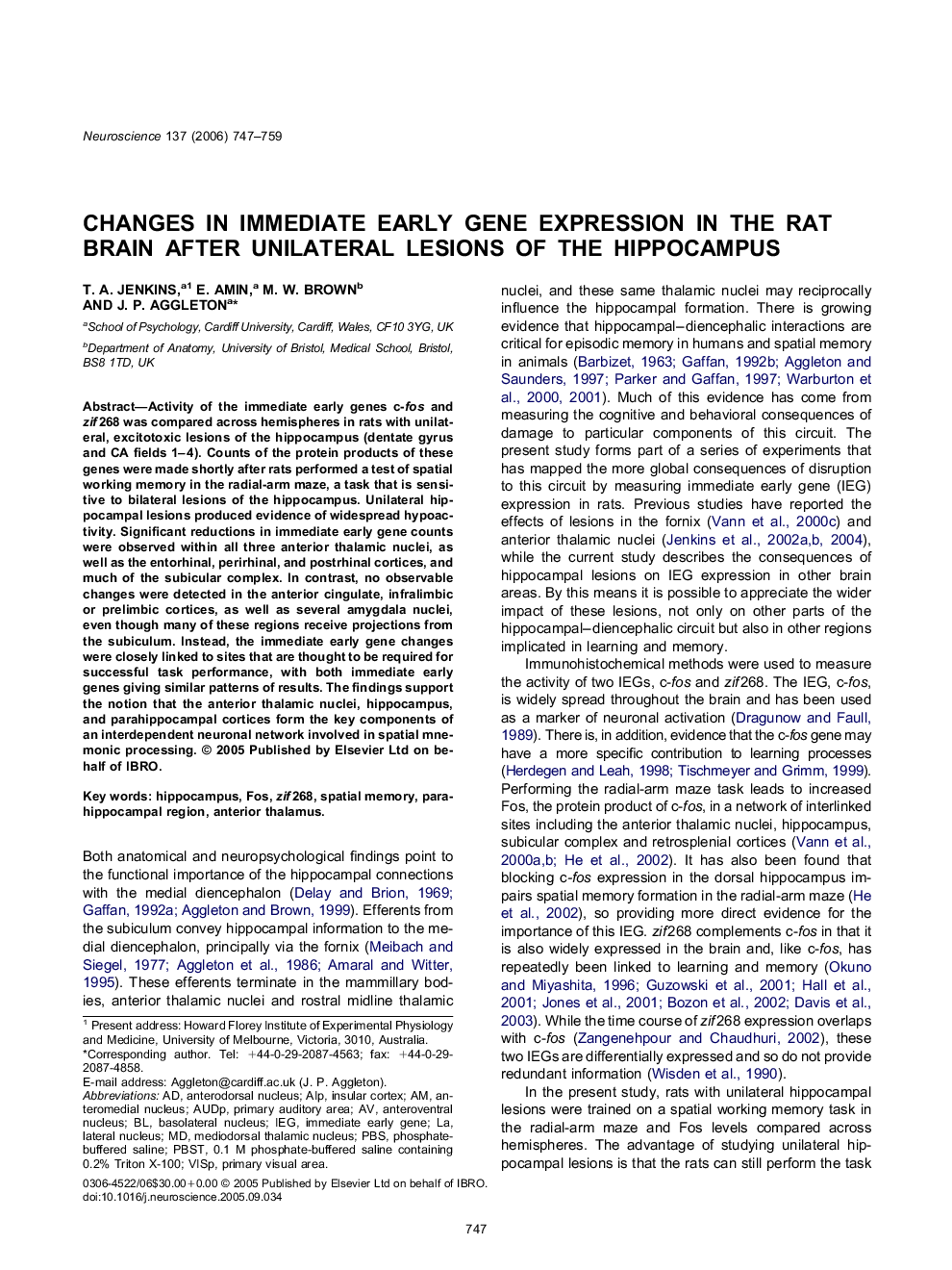| Article ID | Journal | Published Year | Pages | File Type |
|---|---|---|---|---|
| 4342300 | Neuroscience | 2006 | 13 Pages |
Abstract
Activity of the immediate early genes c-fos and zif268 was compared across hemispheres in rats with unilateral, excitotoxic lesions of the hippocampus (dentate gyrus and CA fields 1-4). Counts of the protein products of these genes were made shortly after rats performed a test of spatial working memory in the radial-arm maze, a task that is sensitive to bilateral lesions of the hippocampus. Unilateral hippocampal lesions produced evidence of widespread hypoactivity. Significant reductions in immediate early gene counts were observed within all three anterior thalamic nuclei, as well as the entorhinal, perirhinal, and postrhinal cortices, and much of the subicular complex. In contrast, no observable changes were detected in the anterior cingulate, infralimbic or prelimbic cortices, as well as several amygdala nuclei, even though many of these regions receive projections from the subiculum. Instead, the immediate early gene changes were closely linked to sites that are thought to be required for successful task performance, with both immediate early genes giving similar patterns of results. The findings support the notion that the anterior thalamic nuclei, hippocampus, and parahippocampal cortices form the key components of an interdependent neuronal network involved in spatial mnemonic processing.
Keywords
AIPanteroventral nucleusprimary auditory areaIEGzif268PBSTPBSFOSAnterior thalamusSpatial memoryinsular cortexPhosphate-buffered salineprimary visual areaParahippocampal regionAnterodorsal nucleusMediodorsal thalamic nucleuslateral nucleusanteromedial nucleusbasolateral nucleusHippocampusimmediate early gene
Related Topics
Life Sciences
Neuroscience
Neuroscience (General)
Authors
T.A. Jenkins, E. Amin, M.W. Brown, J.P. Aggleton,
